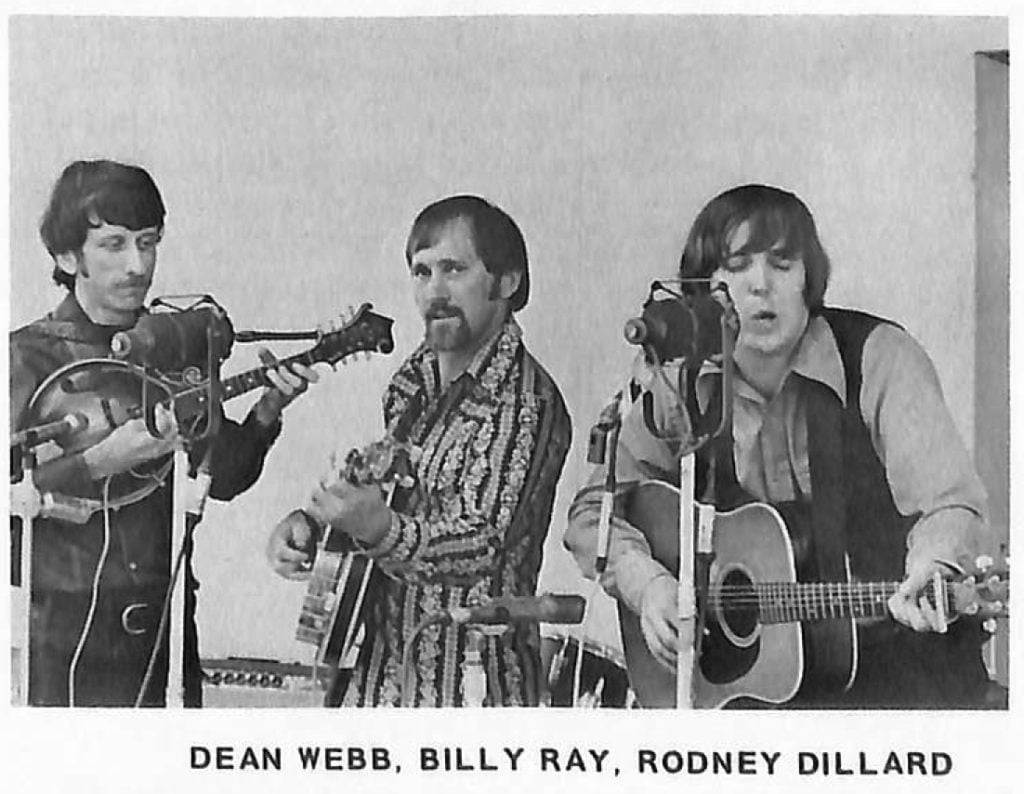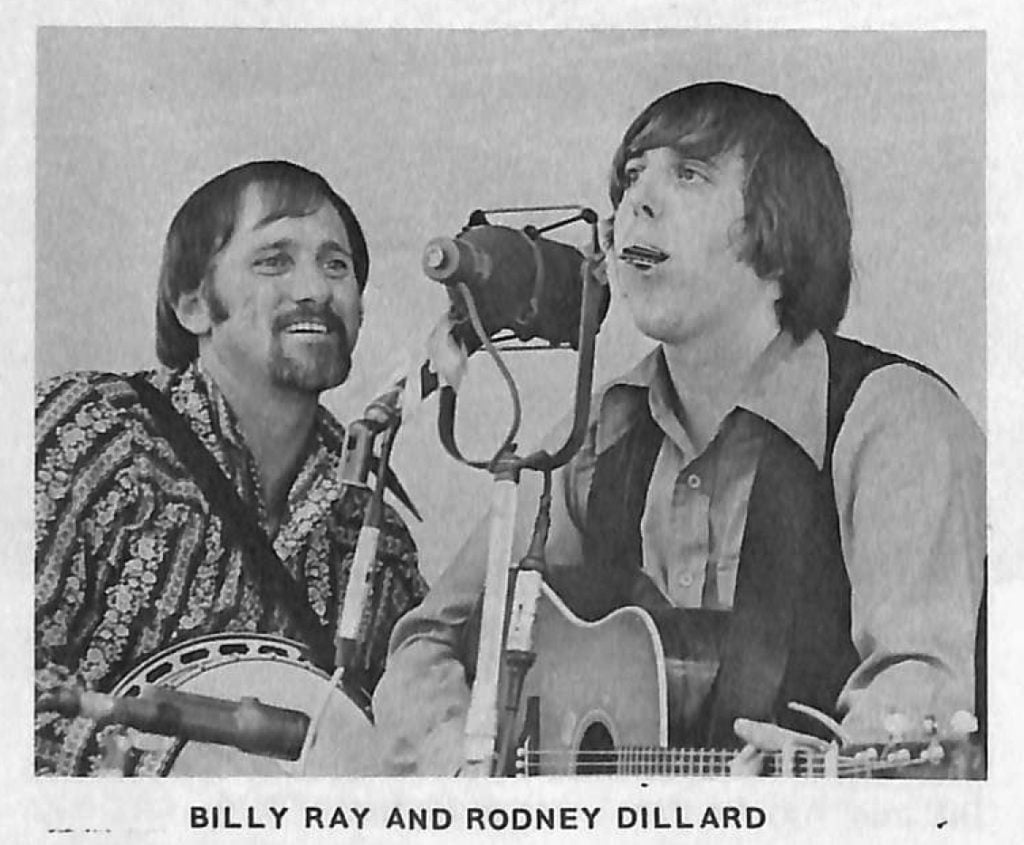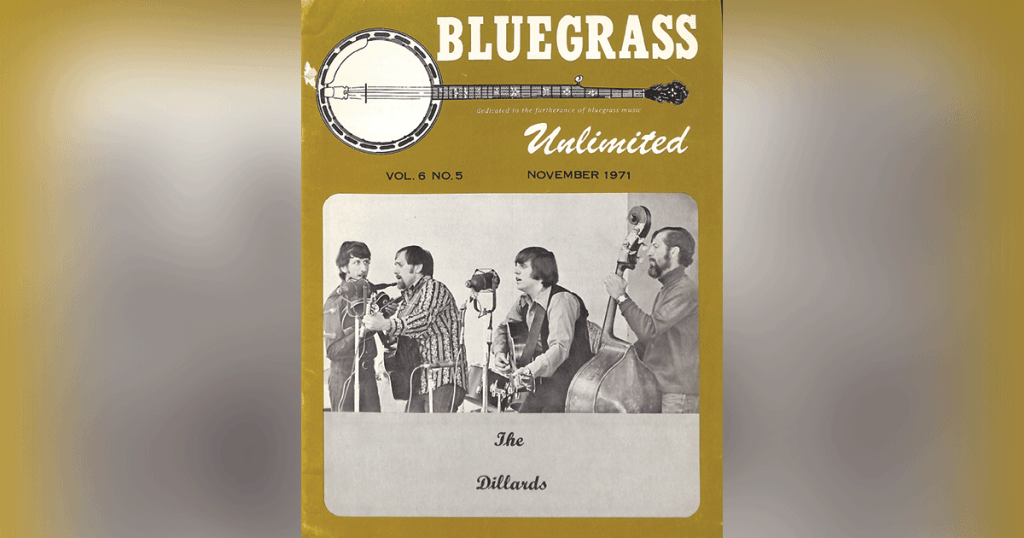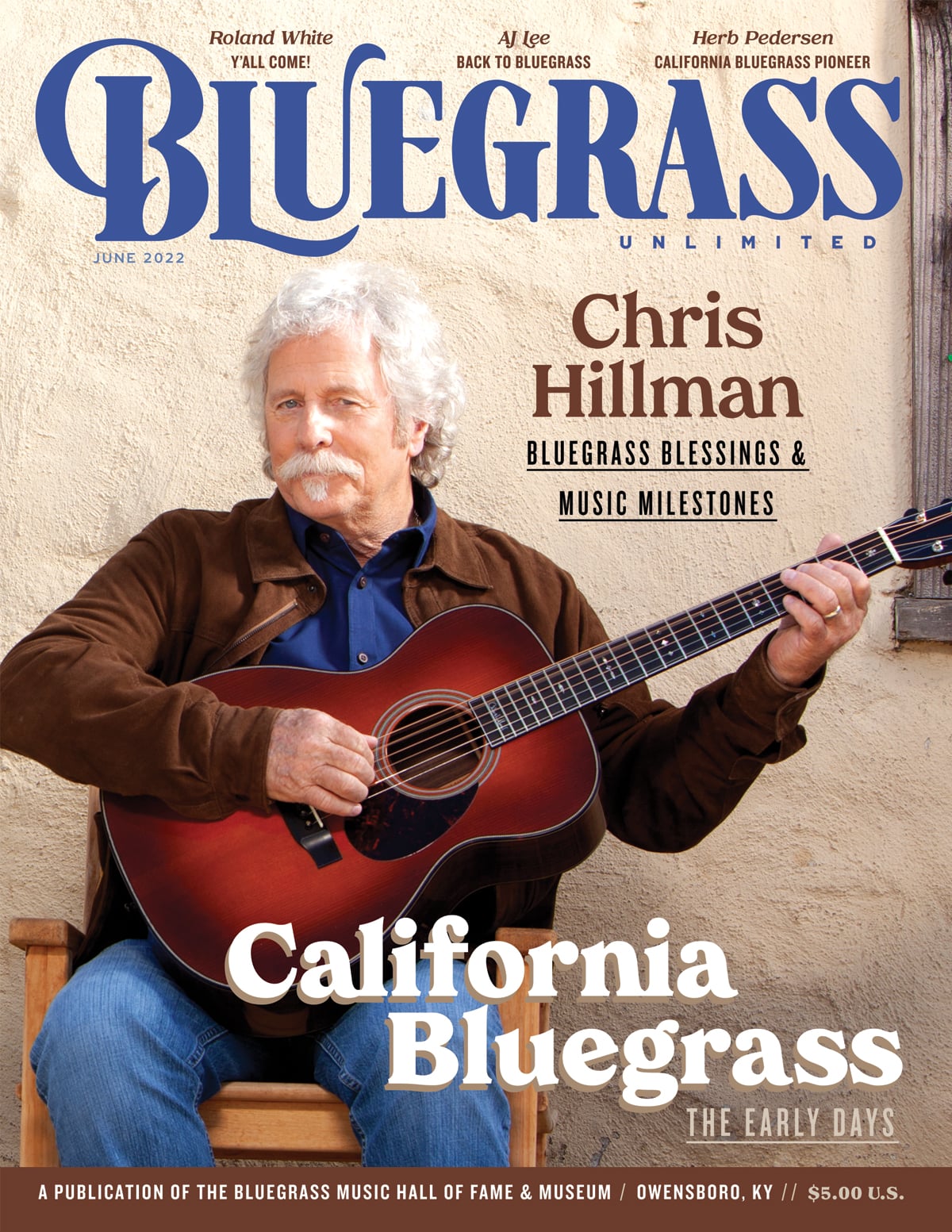Home > Articles > The Archives > And The Dillards Came To Grass
And The Dillards Came To Grass
Reprinted from Bluegrass Unlimited Magazine
November 1971, Volume 6, Number 5
Everyone professing an enduring interest in bluegrass has at some point in time been confronted with the question, “Who is your favorite group?” Most of us of course in responding to this query, muse for a moment or two, utter one or two “well’s”, and then equivocate by selecting half a dozen bands each with its own singularly outstanding contribution, and thereby avoiding the question completely. The Dillards have not eased this situation; indeed, they have made it more pleasantly difficult. For those of you beset by this dilemma the following text may prove some aid in masking your evasion.
The Dillards have of course been around for some time now. Driven westward, so the story goes, from their homeland of Salem, Missouri in the early 1960’s by the forces of musical intolerance, it is recorded that Rodney Dillard upon seeing the smog of greater Los Angeles remarked, “This is the place.” And indeed it was. For the Good King Andy who reigned over many of the homes of this land offered them a place in his kingdom and the Dillards prospered. And they came to be known, if not always recognized. Their voices were heard throughout the land and their words were recorded in the Book of Elektra.
But it came to pass that the people of the land suffered King Andy no longer, and the people called Dillards were expelled into the piney suburban woods to fend for themselves in a land fraught with competition. Yet they endured and prospered, first in the West and then even in the land of the Easterlings wherein dwelt those who called themselves Kritics. And it came to pass that even the Kritics were converted to The Dillards’ Way for there is strength in the Truth.

Who then are these men who call themselves Dillards? The most recent convert to the tribe is banjoist Billy Ray Latham who as faithful readers of this journal will remember once played in the same tent with the Kentucky Colonels (Country Boys). Then there is Paul York who beats the drum to which all of the Dillards march; yet, it is of a meter and tenor inconspicuous in its presence and to which all the followers of The Way can abide. At the other end of the spectrum is Dean Webb on the mandolin. Reserved as he is collected, Dean is a man who speaks with his music, and the message is distinct and precise. But less The Word should be lost in the shuffle, lo, there is Mitch Jayne, musical bassist, who preserves The Word and passes it on to others usually in the echoing nimbus ring of metallic feedback. Mitch, in recounting the minute tribulations of the Dillards’ epic, sustains that continuity of purpose still so much sought after in the primitive western reaches of the land. And ultimately, there is Rodney Dillard who, since his brother, Doug, like Ismail has gone to wander through strange lands, is the sole remaining member of the clan charged with the responsibility of perpetuating not only the family name but the grand traditions which surround it. Rodney sings, plays, laughs, and generally proports himself to this end, and of him it can truly be said that he is devoid of flies.
One then might unnaturally ask, “What then is the Dillard Way?” For those it is only necessary to hear the transcriptions annotated below which have been set down over the past decade in the book of Elecktra encompassing a variety of verses and styles all of which speak of the same Message, a genuine love of country music expressed through the magic of bluegrass.
(This is not a complete discography of the Dillards.
The list is of currently available records)
BACK PORCH BLUEGRASS Electra EKS-7232 (Stereo)
Old Joseph/Somebody Touched Me/Polly Vaughn/Banjo In the Hollow/Dooley/Lonesome Indian/Ground Hog/Old Home Place/Hickory Hollow/Old Man at the Mill/Doug’s Tune/Rain’ Here This Mornin’/Cold Trailin’/Reuben’s Train/Duelin’ Banjo
This first LP of the Dillards belies many things, mainly taste in choice of material and the accompanying arrangements. Herein included is the now famous “Doug’s Tune”.
THE DILLARDS LIVE – ALMOST Electra EKS-7265 (Stereo)
Black-Eyed Susie/Never See My Home Again/There is a Time/Old Blue/Sinkin’ Creek/The Whole World Round/Liberty /Dixie Breakdown/Walking Down the Line/Jody’s Tune/
Pretty Polly/Taters in Sandy Land/Gimme Chaw T’accer/ Buckin’ Mule.
For those who are new to the Dillards and have never seen them in person this should be your first album purchase. Allof the style, elan, and fabled savoir faire of the group are here in a live performance. Throughly enjoyable.
THE DILLARDS WITH BYRON BERLINE – Pickin’ and Fiddlin’ Elektra EKS-7285 (Stereo)

Hamilton County/Fisher’s Hornpipe/paddy on the Turnpike/ Jazz Bow Rag/Apple Blossom/Tom and Jerry/Cotton Patch/ Durang’s Hornpipe/Wagoner/Sally Johnson/Crazy Creek/ Drunken Billy Goat/Black Mountain Rag/Twinkle, Twinkle/Wild John/Soppin’ The Gravy
A double bonus on this one. Byron Berline now residing on the West Coast turns in some of the most imaginative fiddling and the Dillards settle once and for all the question of how good they really are. Simply, excellent music.
WHEATSTRAW SUITE Elektra EKS-74035 (Stereo)
I’ll Fly Away/Nobody Knows/Hey Boys/The Biggest What- ever/Listen To the Sound/Little Pete/Reason to Believe/ Single Saddle/I’ve Just Seen a Face/Lemon Chimes/Don’t You Cry/ Bending The Strings/She Sang Hymns Out of Tune.
A major departure from the former albums, but not as much as may first appear. There is the use of orchestration on some numbers, but for purists there may be compensation in the quality of the arrangement which must rank among the very best in progressive bluegrass. This album has Herb Pedersen on banjo.
COPPERFIELDS. Elektra EKS-74054
Rainmaker/ln Our Time/Old Man at the Mill/Touch Her If You Can/Woman Turn Around/Yesterday/Brother John/Copper- fields/West Montana Hanna/Close The Door Lightly/Pictures/ Ebo Walker/Sundown.
This latest effort defines once and for all the direction the Dillards have chosen (as have other bluegrass groups). There is again, as on the “Wheatstraw Suite” album the use of orchestration, but that seems to occur only on the more modern numbers. The older songs of which there are relative many are arranged in a simpler manner yet they seem to fit into the patch work. Perhaps, the Dillards are trying in their way to tell us something about the music we call bluegrass.

